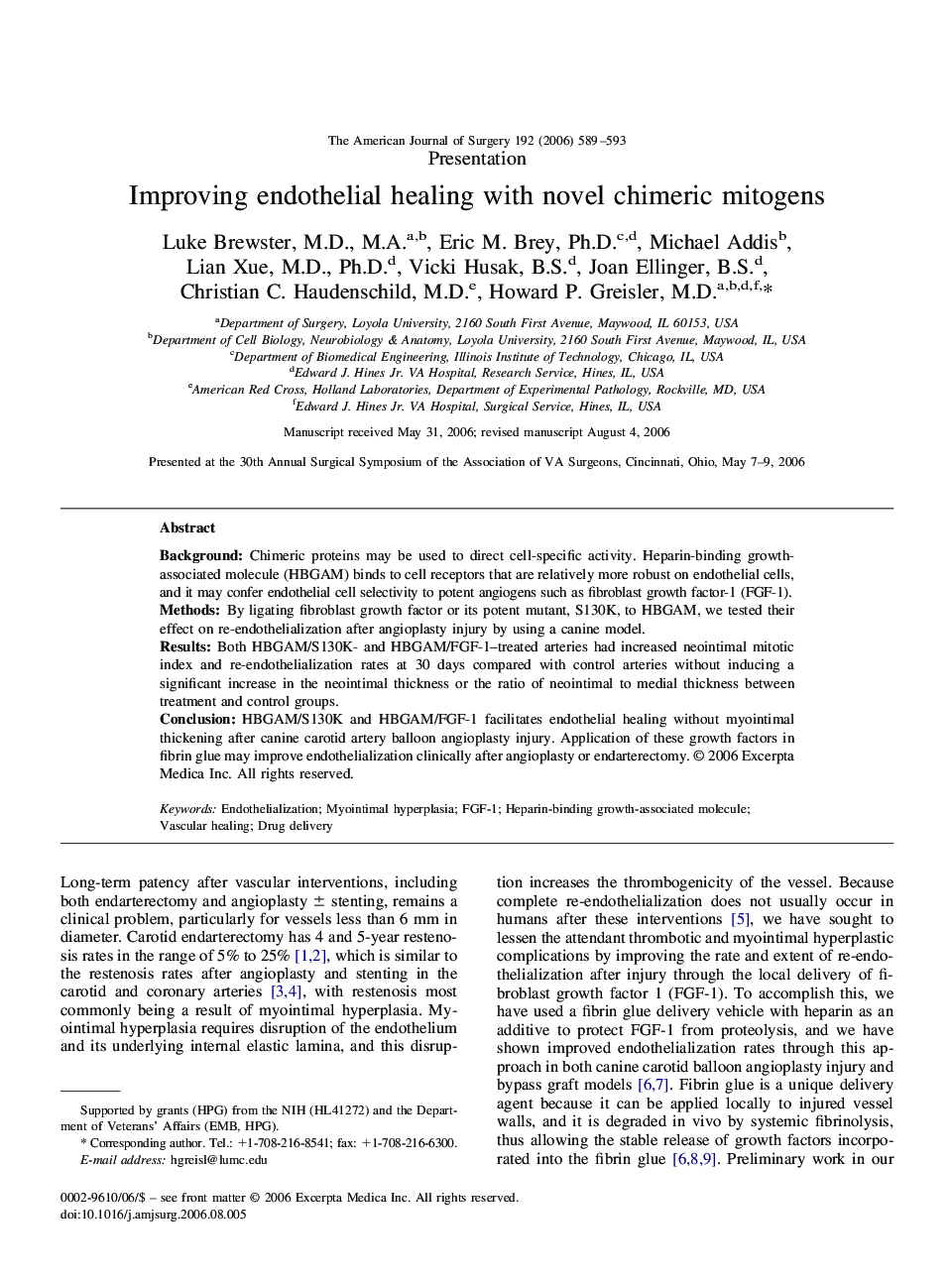| کد مقاله | کد نشریه | سال انتشار | مقاله انگلیسی | نسخه تمام متن |
|---|---|---|---|---|
| 4281697 | 1611600 | 2006 | 5 صفحه PDF | دانلود رایگان |

BackgroundChimeric proteins may be used to direct cell-specific activity. Heparin-binding growth-associated molecule (HBGAM) binds to cell receptors that are relatively more robust on endothelial cells, and it may confer endothelial cell selectivity to potent angiogens such as fibroblast growth factor-1 (FGF-1).MethodsBy ligating fibroblast growth factor or its potent mutant, S130K, to HBGAM, we tested their effect on re-endothelialization after angioplasty injury by using a canine model.ResultsBoth HBGAM/S130K- and HBGAM/FGF-1–treated arteries had increased neointimal mitotic index and re-endothelialization rates at 30 days compared with control arteries without inducing a significant increase in the neointimal thickness or the ratio of neointimal to medial thickness between treatment and control groups.ConclusionHBGAM/S130K and HBGAM/FGF-1 facilitates endothelial healing without myointimal thickening after canine carotid artery balloon angioplasty injury. Application of these growth factors in fibrin glue may improve endothelialization clinically after angioplasty or endarterectomy.
Journal: The American Journal of Surgery - Volume 192, Issue 5, November 2006, Pages 589–593